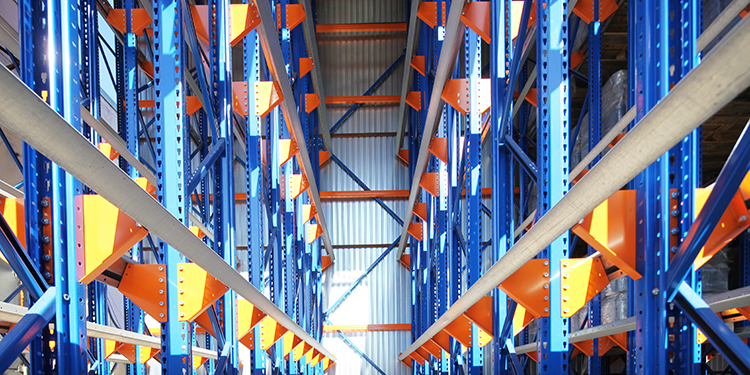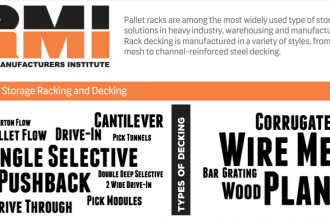12 Safety Best Practices For Drive-In Rack

Drive-in rack, engineered for highly dense storage of multiple pallets of uniform product, delivers space savings by eliminating multiple travel and access aisles. Loaded and unloaded by counterbalanced forklifts that elevate each load to its storage destination position height prior to entering the structure, safety and precision are of extreme importance when using drive-in rack. Here are 12 safety best practices for drive-in rack as recommended by the members of RMI:
- Inspect the pallet prior to placing the load in the drive-in rack system. Make sure the pallet is the proper size for the specific structure (not too wide or too narrow) and that the pallet is in good condition with no damaged or cracked bottom boards. Repalletize to a different pallet if necessary, prior to putaway.
- Ensure centered load alignment between the rack uprights and verify that the pallet has been raised to the correct rail height prior to entering the rack. Enter the rack in a perpendicular orientation.
- Only use forklifts whose dimensions have been verified as fitting within the drive-in rack. Drive-in rack is engineered specifically to accommodate specific vehicles with appropriate clearances between columns, under rails, and between baseplates. Using a larger vehicle will damage the rack.
- Keep the bottom pallet boards at least 1 to 2 inches above the rails when transporting the palletload into the drive-in rack. Do not drag or push the pallet on the rails as that can cause excessive stress and wear on the structure and on pallets, increasing the risk of a failure.
- Lower the pallet onto the rails slowly when it is in the correct storage position; do not drop the pallet abruptly.
- Prior to backing out of the pallet and the rack, lower the forks 1 to 2 inches, then back out slowly. Do not lower the mast or forks completely until clear of the structure.
- When backing out, be cautious of potential forklift and pedestrian traffic in the access aisle. Use the forklift horn to alert any other vehicles or personnel who may be approaching the area where the vehicle will be backing out.
- Do not speed in or out of drive-in rack; because it is engineered for high density storage, it is important to load the system slowly and carefully to avoid collisions with the columns.
- Consider having additional protection to the front entrance columns and arms of drive-in rack, as those structures are the most likely to be impacted by forklift traffic and loads. Many manufacturers offer more robust columns and base plates, as well as an extra flared width on the rail at the entrance point to provide supplementary guidance in pallet positioning.
- Operations seeking extra-deep drive-in racking of 10 positions or more should consider a dual-entry system with five positions each placed back-to-back. This reduces the distance a forklift must travel into the racking to place or retrieve a load, lowering the risk of a column impact.
- Drive-in structures must be loaded from the back to the front. If a load is incorrectly placed with an empty position behind it, never attempt to push the pallet to a deeper position. Always lift it and then move it to the correct position.
- Continually train forklift operators on proper loading and unloading of drive-in racking.
Looking for more rack safety best practices and guidelines? Watch RMI’s recent webinar, “Rack Safety 101.”


